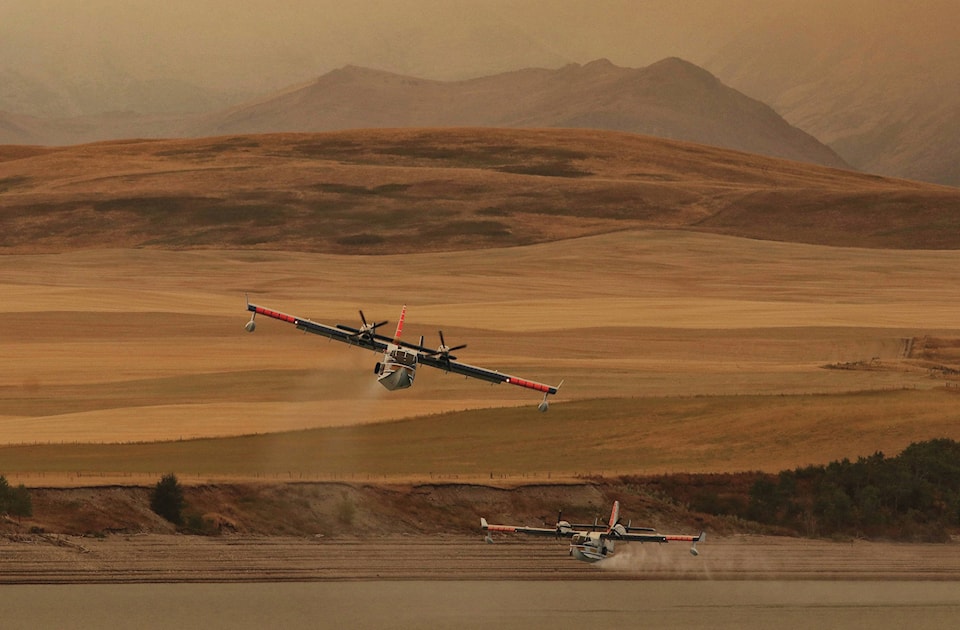WATERTON — As wet, cool weather provided some relief to crews battling a wildfire in southwestern Alberta, a wildlife official said animals in and around Waterton Lakes National Park are well-adapted to survive the flames.
Parks Canada said Thursday that about six millimetres of rain fell over the Kenow fire overnight and it has not grown beyond an estimated 360 square kilometres.
But the agency cautioned the situation remains serious and it may once again become intense despite the rain. Some 500 people have been subject to evacuation orders in the area and Parks Canada said it could be weeks until the Waterton townsite re-opens.
Matt Besko, who is director of wildlife policy at Alberta Environment and Parks, said wildlife left in the park have evolved to be able to deal with natural wildfires.
Some individual critters may become trapped and die.
“But for the most part, species are fairly mobile,” he said. ”Larger mammals will run, birds will fly.”
Birds probably fared well because the fire did not sweep through during nesting season and the young would have fledged by now. Amphibians may have been able to protect themselves by burrowing under the dirt.
But some species such as squirrels and porcupines are more vulnerable because they can’t run as fast.
The fire will transform the landscape in a way that will be beneficial to many animals in the long term, Besko said.
Some will have fresh leaves to munch on before too long.
“Many of our ungulates like deer, moose, elk, respond very favourably to recent fire activities because it does promote nutrient cycling as well as a flourish of new growth,” he said.
Some animals, such as woodland caribou — a species that lives further north in Alberta — need large tracts of uninterrupted old-growth habitat, so fires are a negative.
But Besko said it’s rare that a naturally occurring fire would root out any particular species from an area.
The Kenow fire spread across the B.C.-Alberta boundary into Waterton late last week and the townsite was evacuated.
As firefighters worked to keep the Kenow fire from spreading into the Waterton townsite on Monday night, a grass fire ignited near the gates at the northern portion of the park.
That fire spread through grassland outside the park’s boundaries, destroying some properties and prompting the evacuation of parts of Cardston County, the Municipal District of Pincher Creek and the Blood reserve, a First Nations community southwest of Lethbridge.
